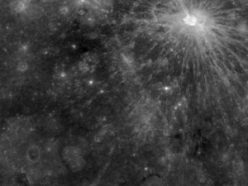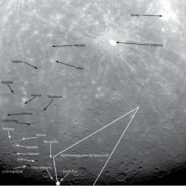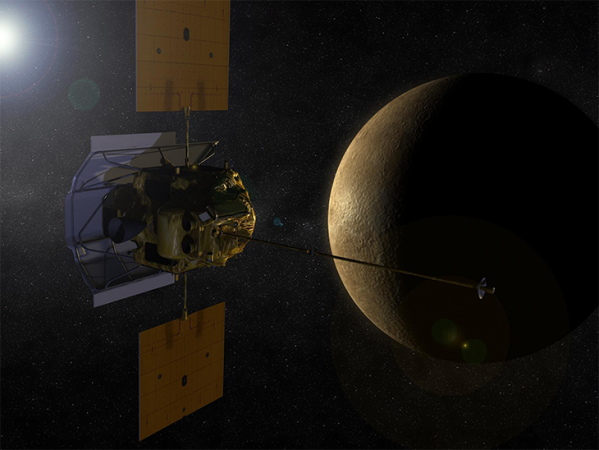Planetary paparazzo
NASA satellite snaps historic photographs of Mercury
Share this:
- Share via email (Opens in new window) Email
- Click to share on Facebook (Opens in new window) Facebook
- Click to share on X (Opens in new window) X
- Click to share on Pinterest (Opens in new window) Pinterest
- Click to share on Reddit (Opens in new window) Reddit
- Share to Google Classroom (Opens in new window) Google Classroom
- Click to print (Opens in new window) Print
Hey, Mercury, say “cheese”!

The first photographs include glimpses of Mercury’s surface never before seen by spacecraft. The images also show a lot of small craters, which look like pits in the ground. (To make a crater, drop a baseball into a sandbox, remove the baseball, and note the impression it leaves behind.) Large craters form when giant rocks, like asteroids, smash into the planet. When such collisions happen, debris from the surface is thrown skyward and then falls to the ground, forming those other, smaller craters.
In MESSENGER’s first three days as a planetary paparazzo, the pics poured in, totaling about 1,500 by March 31. More than 1,000 photographs may sound like a lot, but MESSENGER is just getting warmed up.

On March 17, MESSENGER became the first spacecraft to orbit Mercury. This means that, like a moon, MESSENGER is held close to Mercury by the planet’s gravity. Gravity is a force of attraction that increases with more mass. The more mass, or amount of stuff inside something, the stronger the pull. Any two objects with mass, even you and your pencil, have gravity that pulls them toward each other. In the case of you and your pencil, the masses are too small for you to feel drawn together.
Gravity holds the solar system together. The sun’s gravity keeps Earth from flying off into the Milky Way, and Earth’s gravity keeps the moon and satellites nearby. Mercury doesn’t have a lot of mass, but it has enough to keep MESSENGER in the neighborhood. In 12 months, MESSENGER will make about 700 laps around Mercury.
The spacecraft left Earth on August 3, 2004. Since then, it has flown past Mercury three times, each time sending back photographs of the planet. Now MESSENGER is settled in Mercury’s orbit for a complete scientific investigation of the planet. On April 4, all the onboard instruments began sending scientific measurements back to Earth on a regular basis. The scientific studies will last for a year, and researchers hope to learn more about the history, atmosphere, magnetic field and cratered landscape of the sun’s nearest planetary neighbor.








